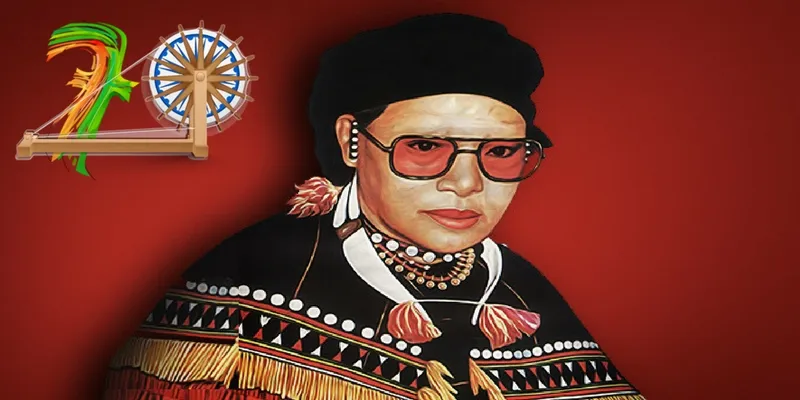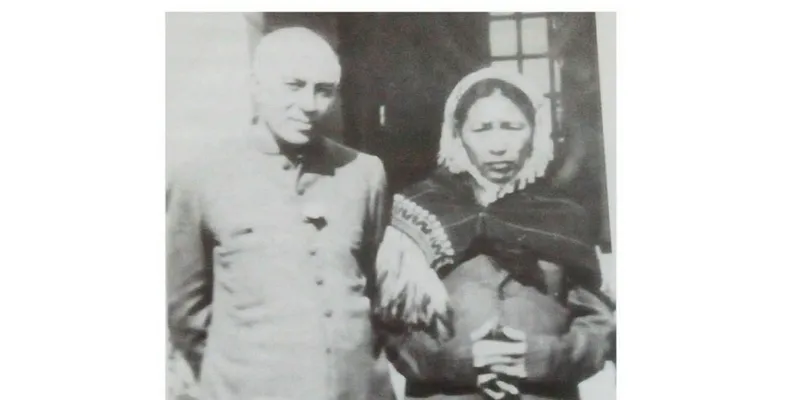How a 13-year-old guerrilla fighter took on the might of the British Raj
Rani Gaidinliu joined the freedom struggle at the age 13, and was sentenced to life imprisonment at 16. Pandit Jawaharlal Nehru rightly called this braveheart the Rani of the Nagas.

“We are free people — the white man should not rule over us.” Thus calling out to her Zeliangrong tribesmen was the voice of 13-year-old Rani Gaidinliu, who joined the freedom struggle in present-day Northeast India. Today, her struggle is lost in history as most of her countrymen wouldn’t even have heard her name. At 16, this valiant girl was sentenced to life imprisonment for leading a movement to drive out the colonial rulers from Manipur and Nagaland. Nevertheless, she was released in 1947 after India’s independence and was given the title of ‘Rani’ by the then-prime minister Pandit Jawaharlal Nehru.
Early life and Heraka movement
Gaidinliu belonged to the Rongmei clan of the Zeliangrong tribe in the Tamenglong district of western Manipur. Born on January 26, 1915, she was fifth among eight children. Her native village was Nungkao, which is present-day Tamenglong district. Brought up in a socially backward region, Gaidinliu could never receive any formal education. However, this did not stop her from joining the freedom struggle.

At the age of 10, Gaidinliu came under the influence of her cousin, Haipou Jadonang, who was then leading a socio-political movement called Heraka (meaning ‘pure’), seeking to drive out the British from the region. The movement took inspiration from ancestral Naga practices. In a span of six years, he was able to gather strong support from various tribes and emerged as a strong voice of opposition against the foreign rule. In February 1931, Jadonang was arrested, and in a mock trial by the British Indian authorities, was found guilty. He was hanged on August 29, 1931 at Imphal jail.
In the meantime, Gaidinliu become a strong force in the Heraka movement, leading guerrilla attacks on the British authority.
With the death of Jadonang, the leadership of the Heraka movement fell upon Gaidinliu, who was barely 16 years old at the time.
Read More:
Freedom, at what cost? Jawans and martyrs’ families speak up
How the British East India Company managed to colonise India for nearly 200 years
‘He went mad after he woke up’- experiences of black terror in Andaman’s ‘Kala Pani’ jail
Rani — the leader of the masses
After Jadonang’s death, Gaidinliu began to rebel against British rule. She asked her Zeliangrong tribesmen to refuse to pay taxes and called out for freedom. In her work against the foreigners, she was assisted by donations from the local Naga community. When she got the majority on her side, refusing to cooperate with the British, she posed a huge threat to the colonial rule.

Consequently, the British launched a manhunt to capture Gaidinliu, with a monetary reward going to anyone who volunteered reliable information. Despite these efforts by the authorities, she evaded arrest by moving across villages in the regions that are now Assam, Nagaland, and Manipur with her dedicated followers.
In early 1932, her forces engaged in armed combat with the Assam Rifles in the North Cachar Hills and Hangrum village. With her dissent growing, the British assigned a special troop of the Assam Rifles led by Captain MacDonald to arrest Gaidinliu.
As soon as Captain MacDonald got a report of Gaidinliu and her followers being located in a village called Pulomi, he launched a surprise attack by sending a large force in the opposite direction. This was done to mislead Gaidinliu. Perplexed by the raid on the village, Gaidinliu and her followers were captured without any resistance on October 17, 1932. She was handcuffed and taken on foot to Kohima and then later tried in Imphal. Her trial went on for 10 months and she was convicted for murder and her attack on the Assam Rifles. While most of her associates were either executed or jailed, she was sentenced to life imprisonment.
From 1933 to 1947, she served time at Guwahati, Shillong, Aizawl, and Tura jails. In 1937, on his tour of Manipur, Nehru wrote about her:
“What suppression of spirit they have brought to her who in pride of her youth dared to challenge the Empire…And India does not even know of this brave child of her hills.” Nehru also called her the “Rani of the Nagas.”

In the Northeast, Rani Gaidinliu was first the leader of her own people. Even after her release, she worked to empower and uplift the weak. In 1966, she organised a resistance movement against the Naga National Council (NNC), which led insurgents. However, today many Nagas choose not to acknowledge her. Despite this, she was recognised as a freedom fighter and was awarded the Tamrapatra in 1972 and was felicitated with the Padma Bhushan in 1982. In 1993, Gaidinliu died in disappointment as the government could not fulfil the promises of making a separate ‘Zeliangrong Administrative Unit’ under the Union of India. Only a stamp was released in her memory in 1994. Even today, her sacrifice remains unknown to most.
Enter the SocialStory Photography contest and show us how people are changing the world! Win prize money worth Rs 1 lakh and more. Click here for details!







